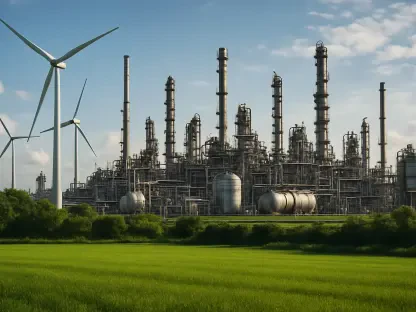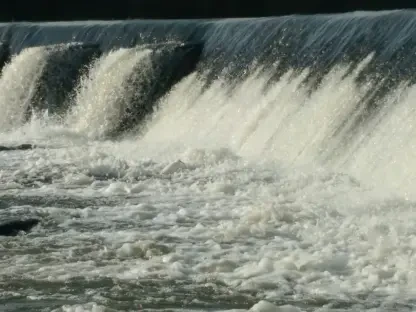New Jersey stands at the forefront of an ambitious energy revolution as it embarks on procuring 1 gigawatt (GW) of transmission-scale energy storage. This effort, spearheaded by the New Jersey Board of Public Utilities, is a significant part of the state’s expansive clean energy blueprint. Governor Phil Murphy’s administration has introduced this initiative with the goal of achieving 2 GW of energy storage by the decade’s end while setting its sights on transitioning to 100% clean energy by mid-century. This bold step signifies more than just meeting targets; it is a foundational part of the legislative agenda introduced in 2018, which aimed to overhaul New Jersey’s renewable energy strategy within the larger national movement toward cleaner energy solutions.
Strategic Procurement and Implementation
Competitive Solicitations and Project Funding
Central to New Jersey’s energy storage plan are two competitive solicitations aimed at securing between 350 megawatts (MW) and 750 MW by the end of October, with further efforts in early 2026 to achieve the 1 GW objective. This move began with an official call for bids launched on June 25, inviting participation in both standalone storage solutions and integrated solar-plus-storage projects. Crucially, the procurement of these projects is supported by the New Jersey Clean Energy Program’s budget, ensuring that costs do not trickle down to ratepayers. The program is backed by a utility bill surcharge, which has provided steady financial support for clean energy projects over the years. This economic model mitigates the financial burden on consumers while fostering investments in renewable infrastructure.
Addressing Energy Challenges
The initiative strategically addresses several pressing challenges, including the state’s current electricity generation composition and the recent hikes in electricity rates driven by increased demand and limited supply. New Jersey’s energy production today consists largely of 35.8% natural gas and 57.5% nuclear, with renewables making up only 4.8%. By expanding energy storage capabilities, New Jersey aims to diversify its energy mix, thereby reducing reliance on fossil fuels and enhancing grid reliability. The significant move toward energy storage is seen as essential for minimizing volatility in energy prices and bolstering the stability of the power supply system. By incorporating advanced storage solutions, New Jersey intends to create a more resilient and sustainable energy network, essential for meeting both environmental and economic objectives.
Emerging Trends in Energy Storage
Nationwide Momentum and State-Initiated Projects
New Jersey’s ambitious energy storage plans resonate with the broader trends sweeping across the United States. Historically, energy storage projects thrived predominantly in the Southwest, with states like California, Nevada, Arizona, and Texas leading the charge. However, New Jersey’s advocacy for storage systems signifies a shift toward a more geographically diverse energy landscape. This move aligns with the increasing recognition of storage technologies as cost-effective and dependable means to enhance energy resiliency. For instance, recent analyses highlighted the economic benefits of such projects, noting massive savings for Texas ratepayers with the integration of around 5 GW of storage capacity, pointing to potential financial and operational benefits that other states, including New Jersey, are poised to achieve with similar investments.
Phased Implementation and Collaborative Frameworks
New Jersey’s program is methodically structured into phases to ensure effective absorption of new storage capacities into the existing infrastructure. Initially, resources will focus on bulk storage linked to transmission grids, gradually transitioning to incorporate smaller setups tied to local distribution networks. This phased approach facilitates synergy between larger-scale initiatives and localized efforts, such as behind-the-meter systems, which offer direct benefits to consumers by reducing peak demand and lowering electricity costs. Moreover, a potential third phase is being considered to reinforce this comprehensive strategic framework. By engaging a wide range of stakeholders, New Jersey is building robust cooperative networks aimed at optimizing the impact of its storage investments.
Legislative and Development Milestones
Legislative Support and Financial Commitments
Complementing these efforts is a significant legislative development. New Jersey’s state legislature has passed a bill slated for Governor Murphy’s signature, proposing the establishment of an “energy storage fund.” This fund mandates the allocation of at least $60 million annually beginning in 2028 to stimulate the development of storage systems. The bill has garnered substantial bipartisan support, reflecting a broad commitment to advancing clean energy solutions. This legislative backing underscores an “all-in” state-level strategy aimed at accelerating the adoption of renewable energy technologies, crucial for achieving New Jersey’s long-term clean energy goals.
Current Installations and Future Prospects
Notably, among New Jersey’s notable energy storage facilities is a 415 MW pumped hydropower plant. However, this project will not count towards the state’s ambitious new goal of 2 GW by 2030. Presently, New Jersey has 110 MW of battery storage on hand, bolstered by an additional 1,200 MW of standalone storage projects deemed “shovel-ready” from a cumulative development queue of approximately 3,700 MW. This strategic pipeline not only indicates the state’s readiness to scale up its storage capacities but also illustrates the ongoing transformation of its energy infrastructure. New Jersey’s proactive approach in expanding its energy storage infrastructure is poised to play a pivotal role in shaping a sustainable and economically viable energy future.
Path Forward in Energy Innovation
New Jersey is taking a pioneering role in the push for clean energy with its ambitious plan to acquire 1 gigawatt (GW) of large-scale energy storage. This initiative, led by the New Jersey Board of Public Utilities, is a vital element of the state’s extensive clean energy strategy. Under the leadership of Governor Phil Murphy, this program aims to secure 2 GW of energy storage by the end of the decade. The broader vision targets a full transition to 100% clean energy by mid-century. This initiative is not merely about hitting specific energy milestones; it’s integral to the legislative agenda from 2018, which sought to transform New Jersey’s renewable energy approach and align with the national trend toward sustainable energy solutions. The move emphasizes the state’s commitment to tackling climate change and reducing its carbon footprint. As New Jersey advances in implementing its clean energy policies, it sets a precedent and contributes significantly to the national and global quest for sustainable energy development.









